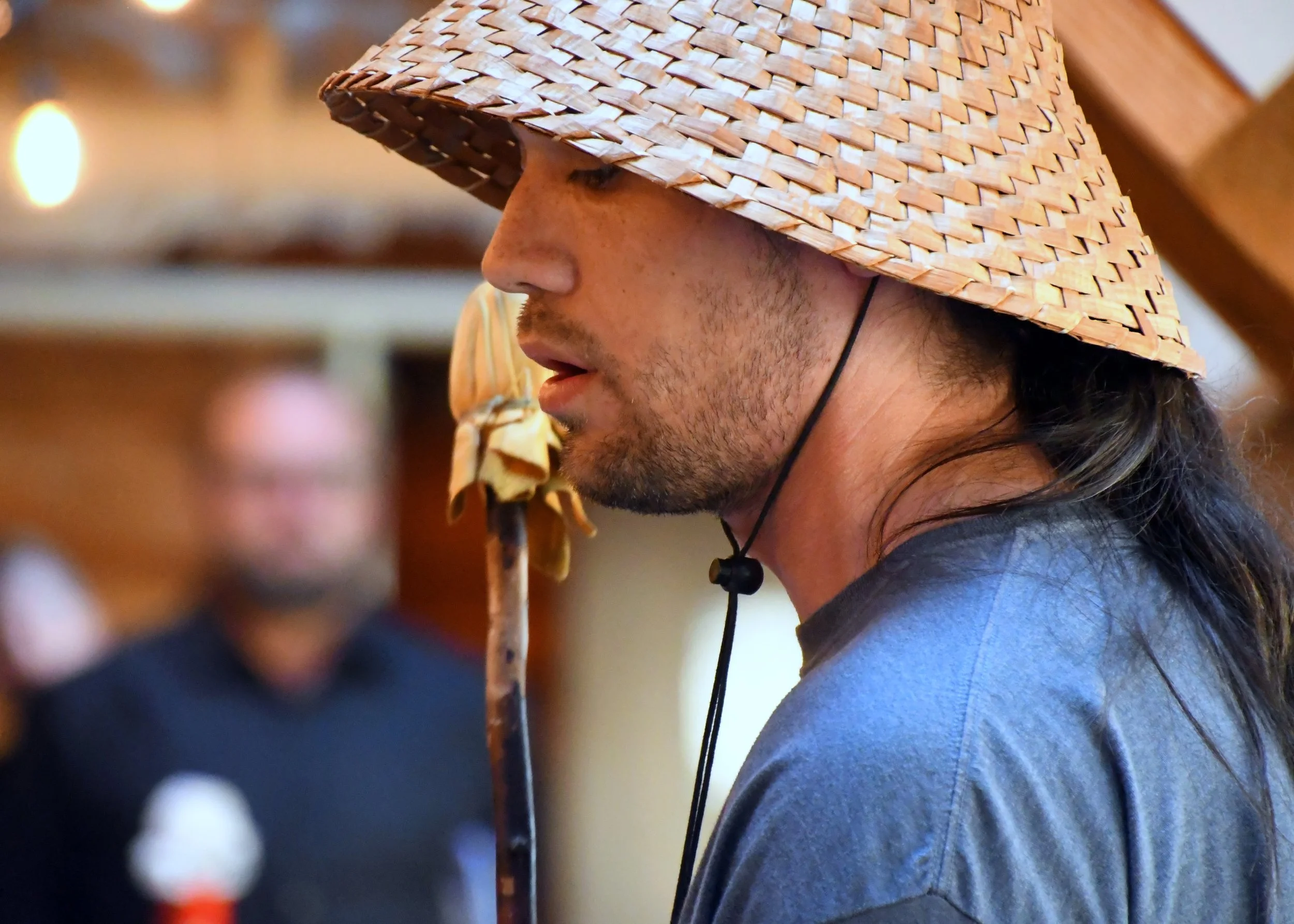Princess Angeline (Kikisoblu)
Kikisoblu, the daughter of Chief Seattle was a friend to early Seattle pioneers. One of the pioneer women, Catherine Maynard, thought Kikisoblu should have a name that would let everyone know that she was the daughter of a great chief -- so she renamed her "Princess Angeline." Angeline sold baskets and did laundry to earn her own living. She lived a very simple life but her new friends looked out for her. (This essay was written for students in third and fourth grade who are studying Washington State History and for all beginning readers who want to learn more about Washington. It is one of a set of essays called HistoryLink Elementary, all based on existing HistoryLink essays.)
From Kikisoblu to Angeline
Chief Seattle's oldest daughter was named Kikisoblu. She became friends with many of Seattle's founding families. One of her friends was Catherine Maynard. She felt that Kikisoblu should have a name that would let the white settlers know that she was the daughter of a great chief. So she called her Princess Angeline. She thought that name was prettier than the name Kikisoblu.
Angeline lived in a small shack on the downtown waterfront. Her new friends wanted to help make her life more comfortable, but Angeline wanted to take care of herself. She washed their laundry so that she could earn her own living. She also sold handmade baskets from her home.
There were very few official birth records for early native people but historians have estimated that Angeline was born around 1828. Photographers liked to take pictures of her. They wanted the world to see what the Native Americans from this part of the United States looked like, and she was the daughter of the chief for whom the city of Seattle was named. She was almost always shown wearing a red bandana, shawl, and several layers of clothing. Her image has been used on souvenirs and postcards for more than 100 years. The portrait of a Native American that the famous Northwest Photographer, Edward Curtis, took in his studio was of Princess Angeline.
When Angeline died in 1896, she was buried in Lake View Cemetery next to her friend, pioneer Henry Yesler. Her coffin was built in the shape of a canoe. After many years had passed, Seattle school children raised money for a special stone for her grave marker. There is a plaque attached to the stone that describes Angeline and her friendship with the early settlers to this region.
This essay is part of HistoryLink's People's History collection. People's Histories include personal memoirs and reminiscences, letters and other historical documents, interviews and oral histories, reprints from historical and current publications, original essays, commentary and interpretation, and expressions of personal opinion, many of which have been submitted by our visitors. They have not been verified by HistoryLink.org and do not necessarily represent its views.
This essay made possible by: Heritage 4Culture
Sources:
This essay is based on the following HistoryLink essays: "Princess Angeline or Kikisoblu, daughter of Chief Seattle dies on May 31, 1896" (Essay 2493) and "Curtis, Edward S. (1868-1952), Photographer" (Essay 8857). It is one of a suite of essays (called HistoryLink Elementary) that focus on important people, places, and events in Washington State History, and that align with elementary school textbooks and state academic standards. All the HistoryLink Elementary essays are included in the HistoryLink People's Histories library, and the HistoryLink Elementary suite and related curricular activities can also be found on HistoryLink's Education Page (http://www.historylink.org/Index.cfm?DisplayPage=education/index.cfm). The HistoryLink Elementary project is supported in part by Heritage 4Culture's Special Projects Program.
by Sandra Osawa
Princess Angeline Trailer (2010)
The life and history of Kikisoblu (Princess Angeline), daughter of Chief Seattle, and the Duwamish Tribe which was one of the largest tribes in Washington State but is now unrecognized by the federal government.
Princess Angeline is seen on many postcards and toward the end of her life, she lived alone, refusing to leave her homeland. What historical events led to her being one of the few Duwamish people left in Seattle by the 1890′s, only 35 years after the peace treaty?
This video explores the story of the Duwamish and their unrecognized tribal status primarily through the life of Princess Angeline.
Purchase the DVD at the gift shop in the Duwamish Longhouse & Cultural Center, or in our online store.
SONGS FOR KIKISOBLU
We’re celebrating the life of Kikisoblu, daughter of Siʔab Siaʔɫ, with these beautiful songs performed by kʷədəd qʷuʔ (Blake Shelafoe) and Gary Stroutos. Videography and editing by Dark Dog Studios, 2021.
Master Flute Player Gary Stroutsos
Duwamish Cultural Ambassador, Drummer, Singer, and Dancer: kʷədəd qʷuʔ (Blake Shelafoe)





